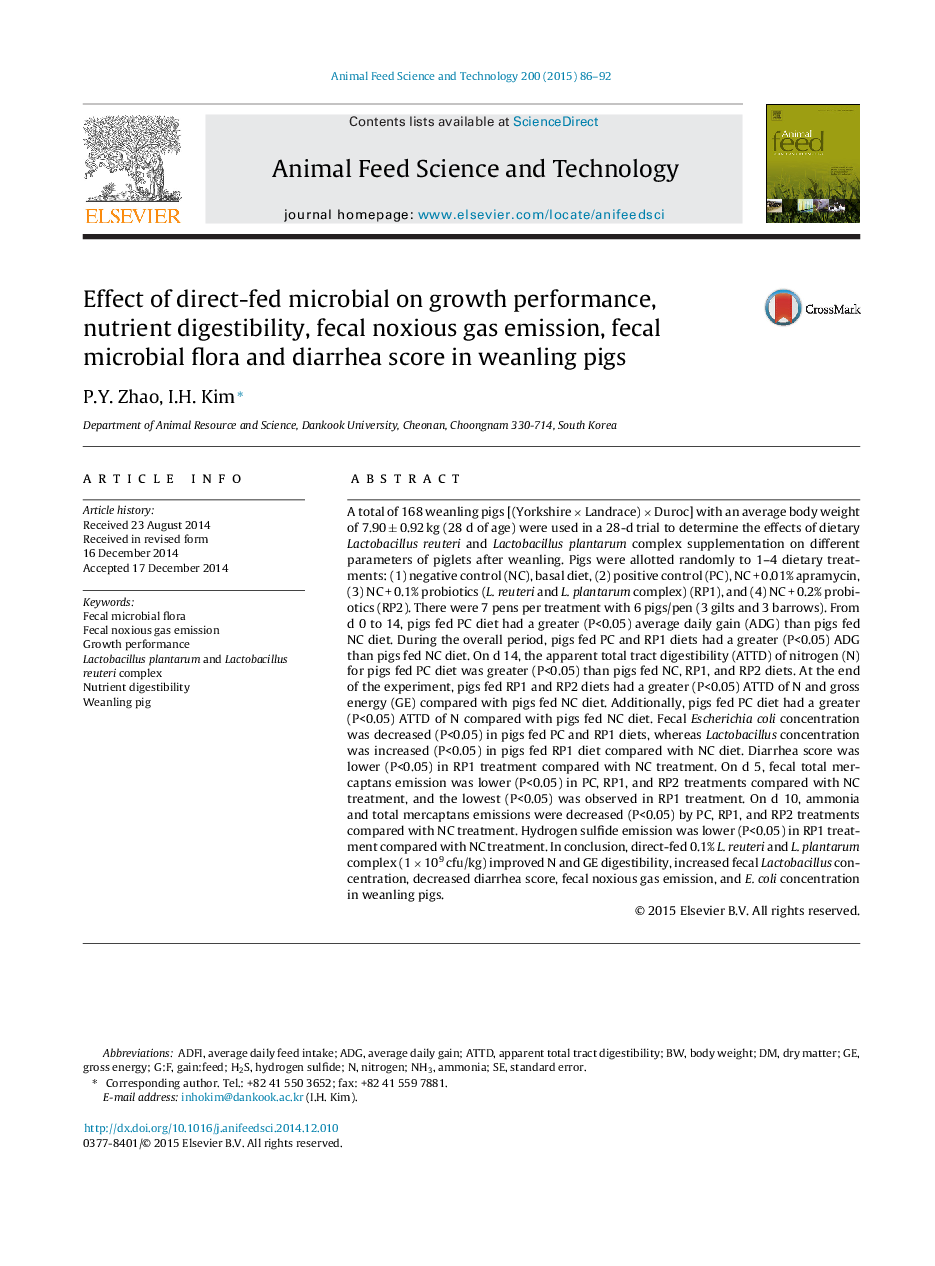| Article ID | Journal | Published Year | Pages | File Type |
|---|---|---|---|---|
| 2419527 | Animal Feed Science and Technology | 2015 | 7 Pages |
•We used 168 weanling pigs to evaluate effects of L. reuteri and L. plantarum complex.•0.1% probiotics complex increased ATTD of N, GE, and fecal Lactobacillus concentration.•Decreased fecal gas emission, diarrhea score, and E. coli concentration were observed.•Further study need to focus on various concentrations of lactobacilli and growth phases.
AbatractA total of 168 weanling pigs [(Yorkshire × Landrace) × Duroc] with an average body weight of 7.90 ± 0.92 kg (28 d of age) were used in a 28-d trial to determine the effects of dietary Lactobacillus reuteri and Lactobacillus plantarum complex supplementation on different parameters of piglets after weanling. Pigs were allotted randomly to 1–4 dietary treatments: (1) negative control (NC), basal diet, (2) positive control (PC), NC + 0.01% apramycin, (3) NC + 0.1% probiotics (L. reuteri and L. plantarum complex) (RP1), and (4) NC + 0.2% probiotics (RP2). There were 7 pens per treatment with 6 pigs/pen (3 gilts and 3 barrows). From d 0 to 14, pigs fed PC diet had a greater (P<0.05) average daily gain (ADG) than pigs fed NC diet. During the overall period, pigs fed PC and RP1 diets had a greater (P<0.05) ADG than pigs fed NC diet. On d 14, the apparent total tract digestibility (ATTD) of nitrogen (N) for pigs fed PC diet was greater (P<0.05) than pigs fed NC, RP1, and RP2 diets. At the end of the experiment, pigs fed RP1 and RP2 diets had a greater (P<0.05) ATTD of N and gross energy (GE) compared with pigs fed NC diet. Additionally, pigs fed PC diet had a greater (P<0.05) ATTD of N compared with pigs fed NC diet. Fecal Escherichia coli concentration was decreased (P<0.05) in pigs fed PC and RP1 diets, whereas Lactobacillus concentration was increased (P<0.05) in pigs fed RP1 diet compared with NC diet. Diarrhea score was lower (P<0.05) in RP1 treatment compared with NC treatment. On d 5, fecal total mercaptans emission was lower (P<0.05) in PC, RP1, and RP2 treatments compared with NC treatment, and the lowest (P<0.05) was observed in RP1 treatment. On d 10, ammonia and total mercaptans emissions were decreased (P<0.05) by PC, RP1, and RP2 treatments compared with NC treatment. Hydrogen sulfide emission was lower (P<0.05) in RP1 treatment compared with NC treatment. In conclusion, direct-fed 0.1% L. reuteri and L. plantarum complex (1 × 109 cfu/kg) improved N and GE digestibility, increased fecal Lactobacillus concentration, decreased diarrhea score, fecal noxious gas emission, and E. coli concentration in weanling pigs.
